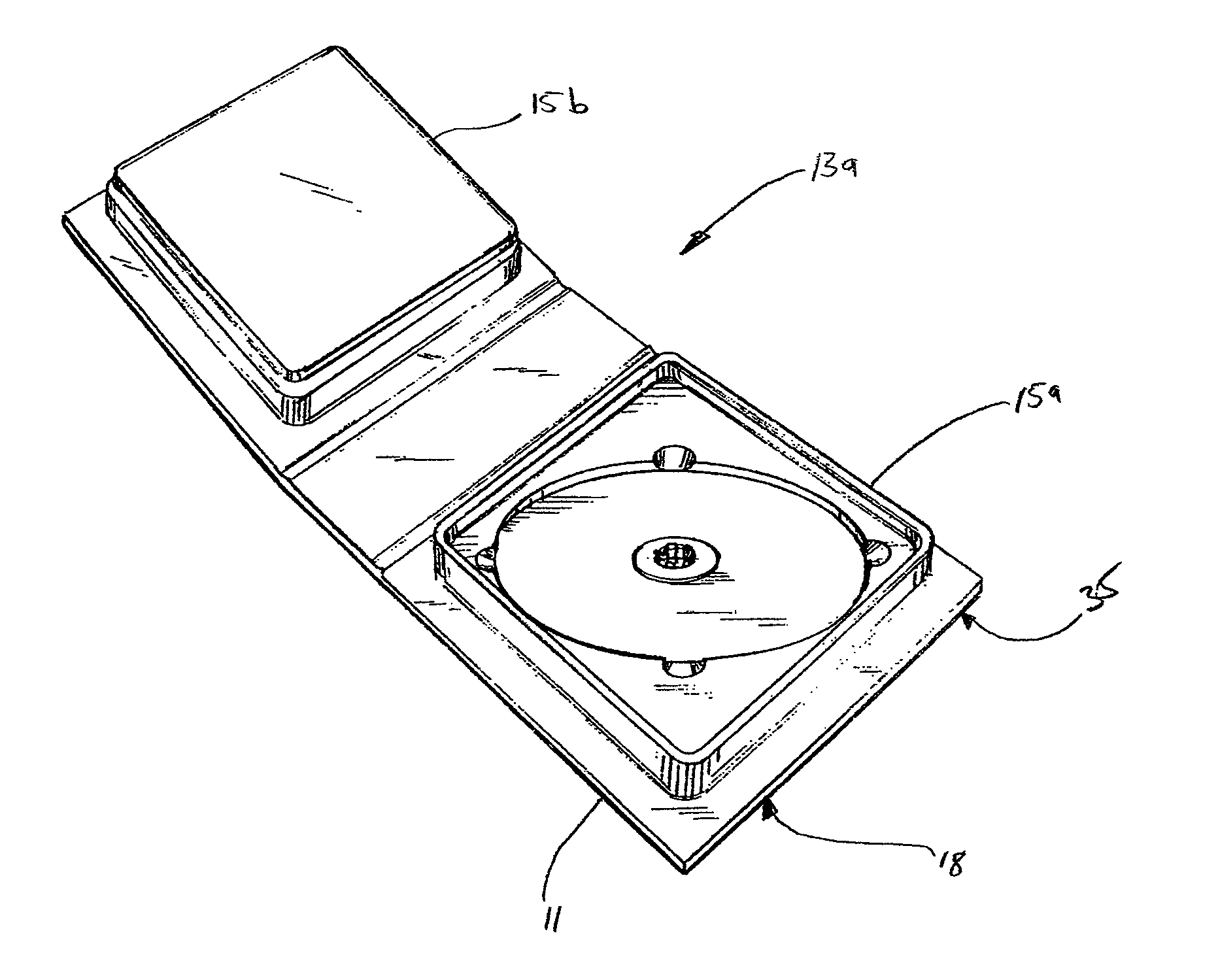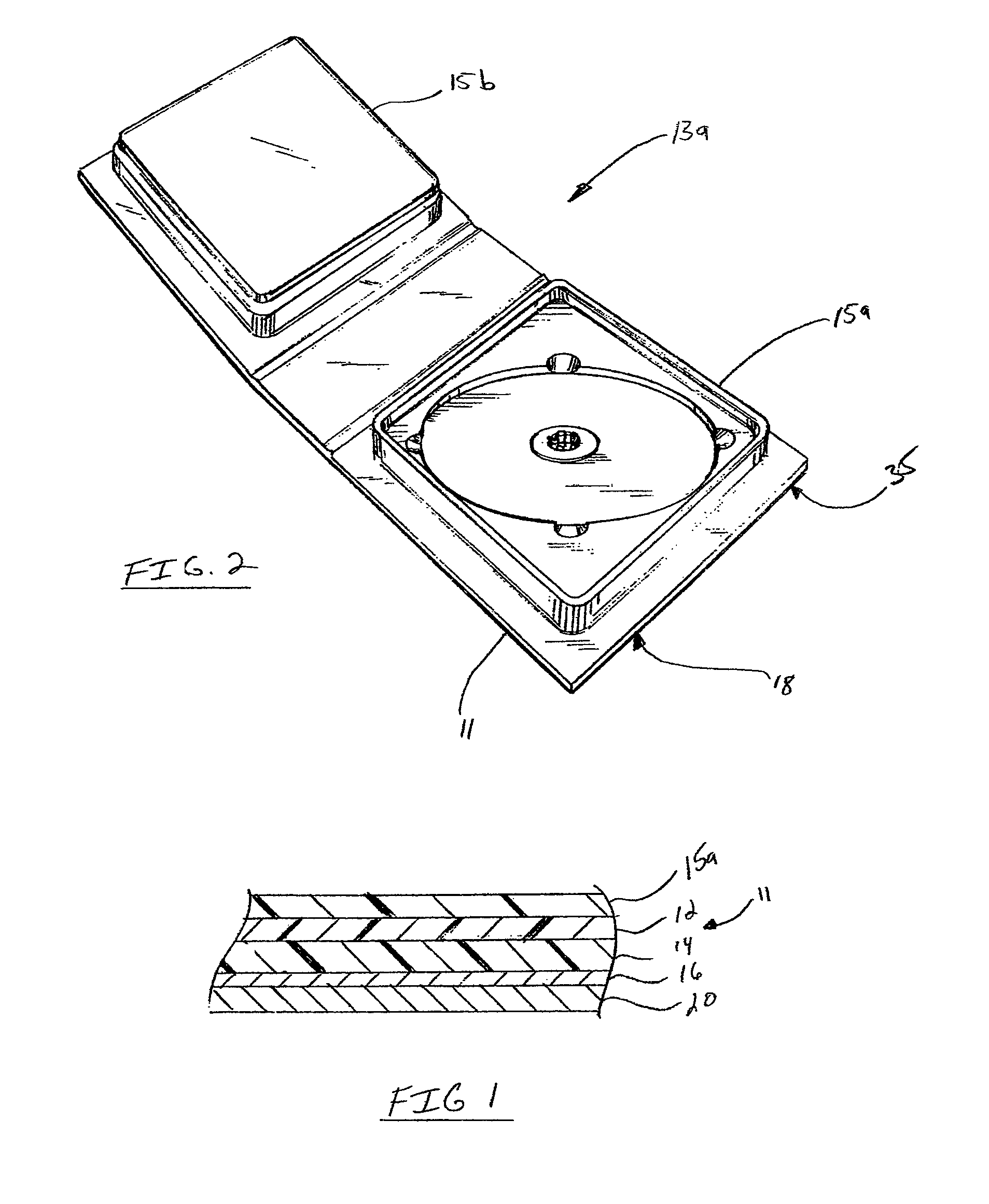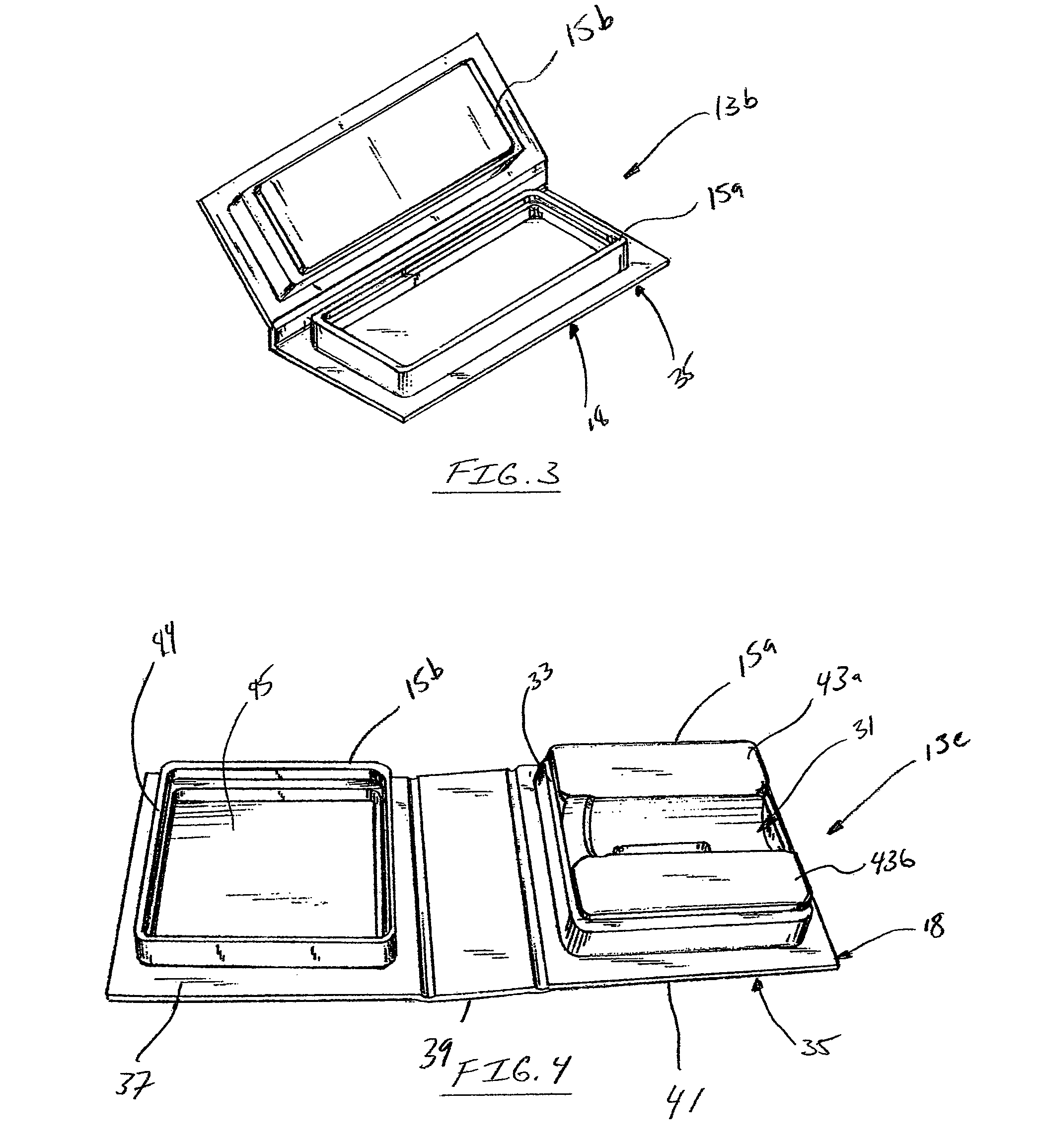Heat sealable laminating film
a laminating film, heat sealing technology, applied in the direction of rigid containers, record information storage, synthetic resin layered products, etc., can solve the problems of inability to reuse packaging, clam shell, insufficient reusable storage medium, etc., to achieve easy recycling, reduce material consumption, and relatively inexpensive manufacturing of thermoformed containers
- Summary
- Abstract
- Description
- Claims
- Application Information
AI Technical Summary
Benefits of technology
Problems solved by technology
Method used
Image
Examples
Embodiment Construction
[0026]In describing the preferred embodiments of the invention which are illustrated in the drawings, specific terminology will be resorted to for the sake of clarity. However, it is not intended that the invention be limited to the specific terms so selected and it is to be understood that each specific term includes all technical equivalents which operate in a similar manner to accomplish a similar purpose. For example, the word “connected” or “bonded” or terms similar thereto are often used. Such terms are not limited to direct connection but include connection through other elements where such connection is recognized as being equivalent by those skilled in the art.
1. System Overview
[0027]In its most basic form, the invention is a multilayered laminating film for receiving a blister portion in a package or container assembly. The multilayered laminating film of the present invention allows for a layered laminated graphical cover portion to be directly sealed to a blister receivi...
PUM
| Property | Measurement | Unit |
|---|---|---|
| thickness | aaaaa | aaaaa |
| thickness | aaaaa | aaaaa |
| pressures | aaaaa | aaaaa |
Abstract
Description
Claims
Application Information
 Login to View More
Login to View More - R&D
- Intellectual Property
- Life Sciences
- Materials
- Tech Scout
- Unparalleled Data Quality
- Higher Quality Content
- 60% Fewer Hallucinations
Browse by: Latest US Patents, China's latest patents, Technical Efficacy Thesaurus, Application Domain, Technology Topic, Popular Technical Reports.
© 2025 PatSnap. All rights reserved.Legal|Privacy policy|Modern Slavery Act Transparency Statement|Sitemap|About US| Contact US: help@patsnap.com



